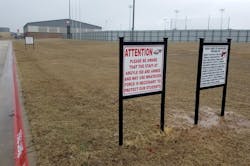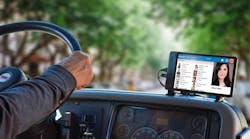The recent school shooting at Marjory Stoneman Douglas High School in Parkland, Florida, which killed 14 students, three staff members and injured 14 others, has President Donald Trump and the National Rifle Association’s (NRA) attention, however; their immediate response to the tragedy has been to arm teachers with weapons. I’m not in favor of teachers carrying weapons and I would much rather prefer to see them concentrate on their primary job of educating students.
They can, of course, play a critical role in helping to identify troubled students that need counseling or professional psychological intervention, but if there is an active shooter on campus, teachers and staff need to let law enforcement officials handle the situation. Police officers have been fully trained on how and when to use their weapons. They have other tactical advantages, as well as trained hostage negotiators available, if necessary.
I always recommend that school administrators prohibit all types of weapons from entering their campuses. Whether an attacker chooses to carry a gun, knife or other type of weapon, they have to find ways to keep potentially all weapons off their campuses.
Before taking any action, one of the most important steps administrators can take is to request a campus security assessment from a school security expert who can help design a full plan for securing the entire campus. Any plan will undoubtedly include security technology, but no single technology can protect a K-12 campus; true protection comes from many layers of security.
Balancing Technology with Policies and Procedures
A very effective plan that can be implemented is one that keeps students off balance or guessing what the security professionals have designed. That plan includes random searches of student lockers (within legal restrictions) and the use of police K-9 units to sniff for weapons and drugs in and around buildings and in parking lots. By keeping the landscape well-trimmed, we can also provide fewer hiding places for prohibited items.
When I was executive director of security for the Washington, D.C. Public School system, we created a strategic security plan for the 150 schools and their campuses. We looked at a mix of electronic security solutions, policies and procedures to create a higher level of protection for our 70,000 students and over 10,000 teachers and staff members.
Implement a close-campus policy. All schools must be closed to outsiders until they are cleared to enter through a single, controlled entrance. All other doors should remain locked throughout the day.
We had access to both walk-through and handheld metal detectors and my staff were fully trained on their use. Handheld metal detectors were very useful at sporting events and school dances where we couldn’t risk allowing weapons in an already highly-charged atmosphere.
While the random searches and metal detectors uncovered many weapons and drugs, our seizures grew smaller as the school year progressed. The randomness of our activities left students so unsure of our plans that many students decided it wasn’t worth the risk of trying to sneak something on the campus.
Signs in the parking lot, at building entries and throughout the facility declared the campus a drug- and weapon-free zone, making it clear that violators would be suspended, expelled and/or prosecuted.
An anonymous tip line or website can also allow students and staff and parents to share rumors before they become reality. Other practical steps schools can take to improve their security posture include:
- Conducting active shooter drills. While fire drills are mandated in virtually every school district, it’s equally important that schools practice active shooter drills. Admittedly, they take time away from classroom instruction, but these drills can save lives and prevent injuries.
- Implement and regularly test emergency communication equipment. PA systems, phones, radios, duress buttons, fire alarms and other devices also can save lives during an emergency. Test them regularly to make sure they’re working when needed.
- Have SROs or a uniformed police presence on campus. The presence of school resource officers on campuses can significantly trim police response time during emergencies when every minute is critical. A police vehicle parked out front of the school can also serve as a strong deterrent.
- Deploy surveillance cameras in and around the campus. Cameras have proven to be a strong deterrent and very effective in helping to ensure policies and procedures are being followed, as well as providing evidence in forensic situations. They also provide a critical live insight for first responders during an emergency.
Even though school security has received greater attention in the wake of the Parkland shooting, as it did following Columbine and Sandy Hook before that, it’s obvious we still need to do more. Security professionals, school administrators, teachers, parents and even students need to be willing to make changes, but those need to be intelligent changes that make use of the proper technology, policies and procedures – and even the element of surprise – to make our campuses safer and more secure.
About the Author:
Patrick V. Fiel, Sr. is the founder of PVF Security Consulting. He has over 35 years of experience managing security and law enforcement organizations. He has served as the public safety advisor for ADT Security Services, Executive Director of Security for the Washington, D.C. Public School System, and is retired from the U.S. Army Military Police Corps. He can be reached at (910) 789-4265 or at [email protected].


